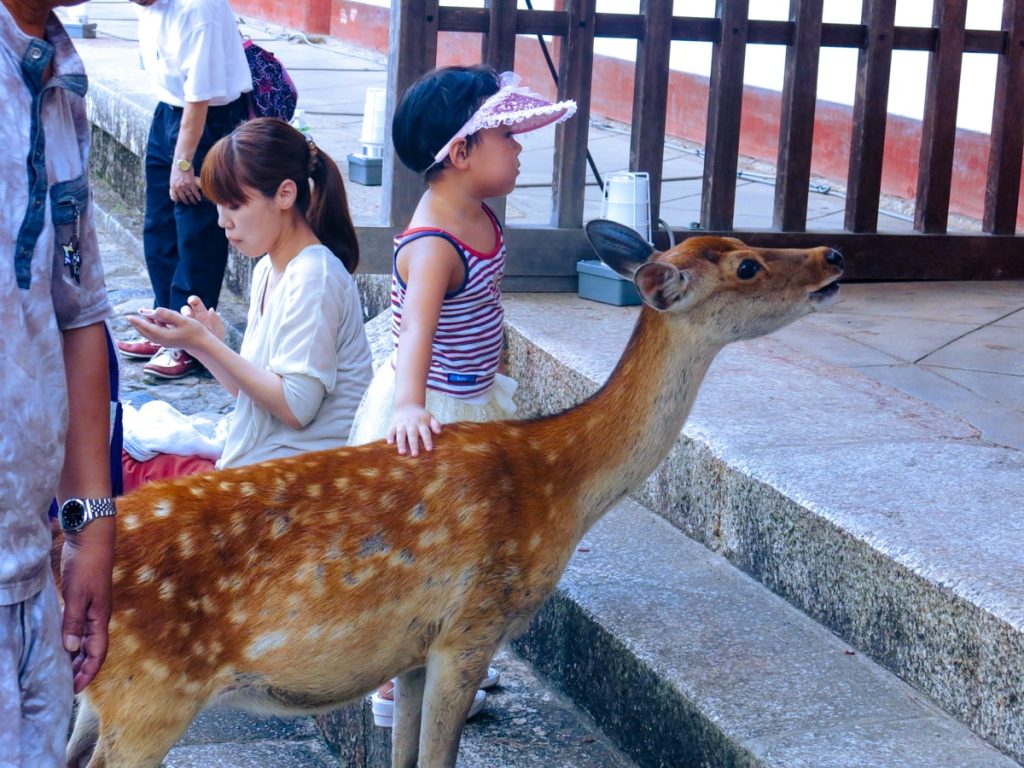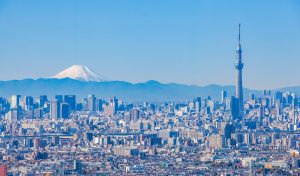It is late September and I am feeding deer in Nara Park, Japan. The male deer with big beautiful antlers bows in gratitude as I hold out a cracker for him.
I am gobsmacked.
Two female deer come over and bow already as I put my hand in the cracker packet to feed them, and then they give me another courtesy bow as they politely accept my offering.
I honestly thought that it was all hype or urban myth, but the scared-bowing deer of Japan is definitely a thing!
It’s also a little complicated, as are most cases in the topic of ethics surrounding popular animal tourism.
Let’s get into all the questions related to feeding the deer in Nara Park and you can make your mind up for yourself if you’re planning a trip to Japan.
How To Get To Nara Park, Japan
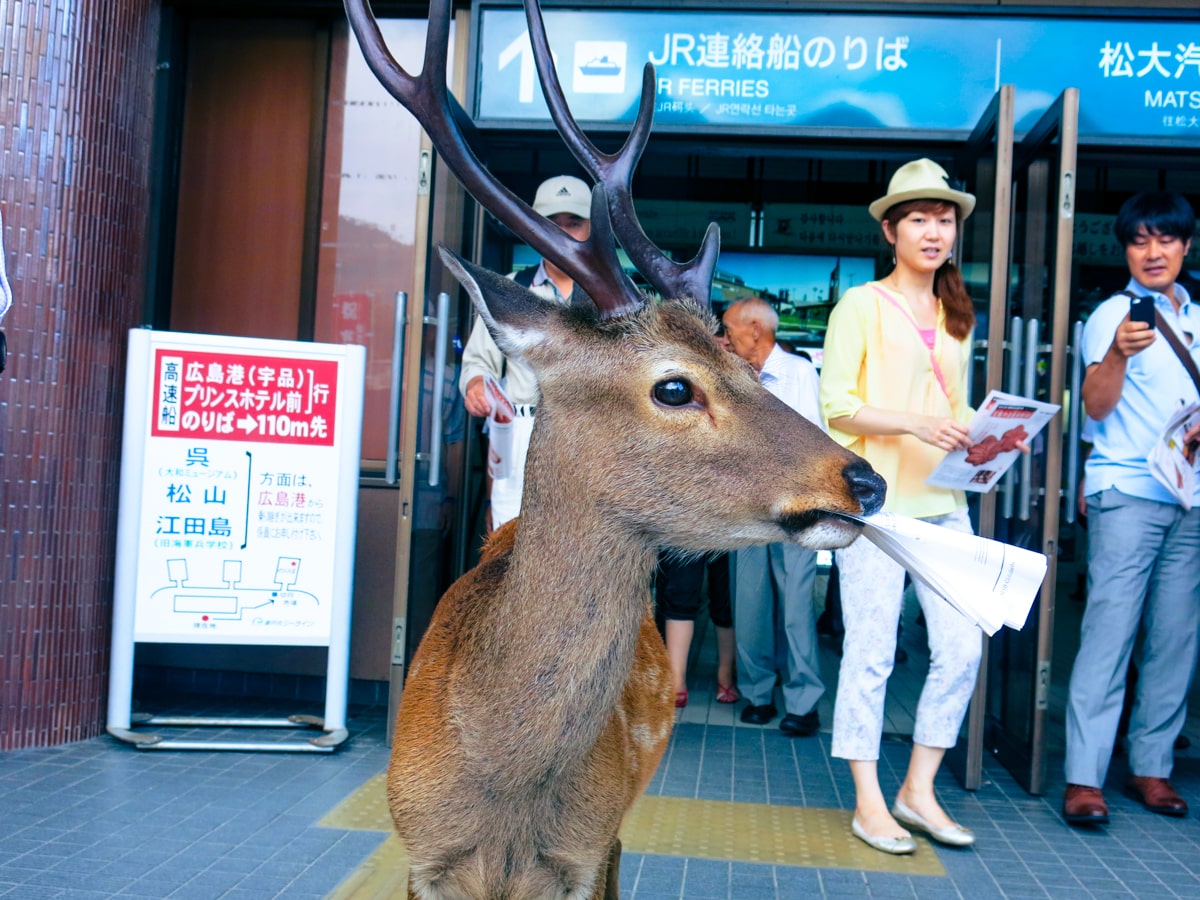
To visit the bowing deer of Nara, you’ll first need to make your way to the city of Nara, where you’ll find the popular park. Found halfway between the cities of Osaka and Kyoto, most visitors choose to take a day trip from one of these larger cities.
That being said, Nara is home to a number of other attractions that make staying a night or two in the city worth it, in its own right.
Getting to Nara from Osaka: Visiting Nara from Osaka is one of the most popular options thanks to the super quick rail links between the cities. Using your Japan Rail Pass, you can take the Yamatoji Line from either JR Osaka Station or Tennoji Station to JR Nara Station. The journey takes around 30 to 40 minutes, depending on the station you’re starting your journey from. Alternatively, you can opt to buy this tour package which includes transportation and Bowing Deer delight From Osaka.
Getting to Nara from Kyoto: If you’re heading to the Nara deer from Kyoto (after deciding who wins the Tokyo vs Kyoto battle), you’ll need to take the Japan Rail Nara Line from Kyoto Station to Nara Station. If you take the Miyakoji rapid train, your journey shouldn’t be any longer than 45 minutes and these trains depart every half an hour.
You can take other local trains, though this will mean your journey is likely to take about an hour and fifteen minutes one-way.
Once you arrive at Nara Station, Nara Park is only around a 20-minute walk away, allowing you to soak up the city as you go. There are also numerous buses that run from right outside of the station to many bus stops around Nara Park. Another reminder to get your Japan Rail Pass before you go to Japan to save you money and headache:

Why Does Nara Park Have So Many Deers?
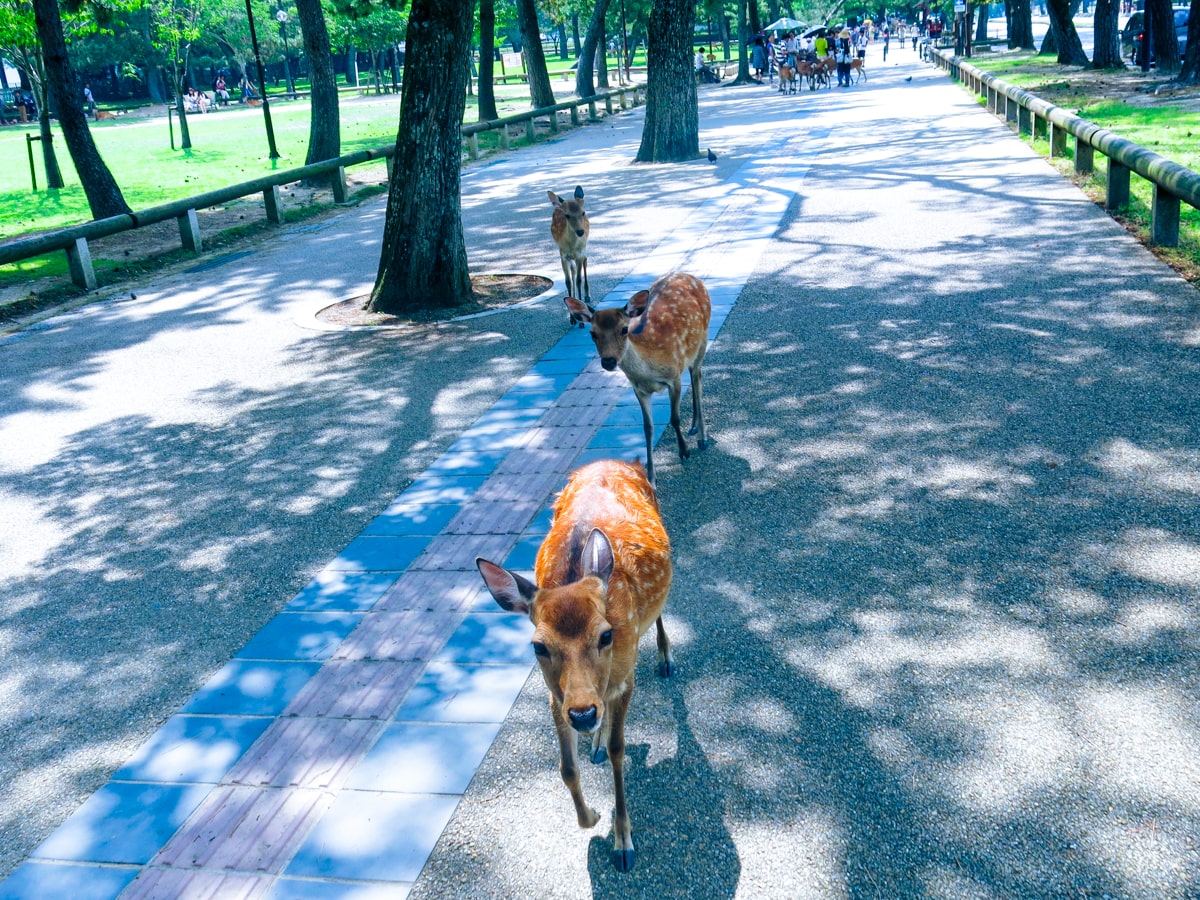
To understand why the 13,00 deer of Nara thrive here in such huge numbers, we’re going to need to take a look at Japanese history and how deer have become part of the country’s traditions and culture.
Nara deer are part of the sika species, a type of deer that has been roaming the islands and much of East Asia for thousands of years. According to the local Kasuga Grand Shrine in Nara, the god of Thunder, known as Takemikazuchi, appeared one day on nearby Mount Wakakusa riding a white deer.
From that point onwards, the deer of Nara were considered to be divine, and the killing of the deer was made punishable by death. Once any deer hunting had been put to an end, the deer of Nara began to flourish and grow in huge numbers over the next few centuries.
During the post-war period, the number of Nara deer grew to over 1,500, and in the late 2000s, this number rose higher to around 1,800. After a period of culling in 2017, the population now stands at around 1,200.
Are The Nara Deers Protected?
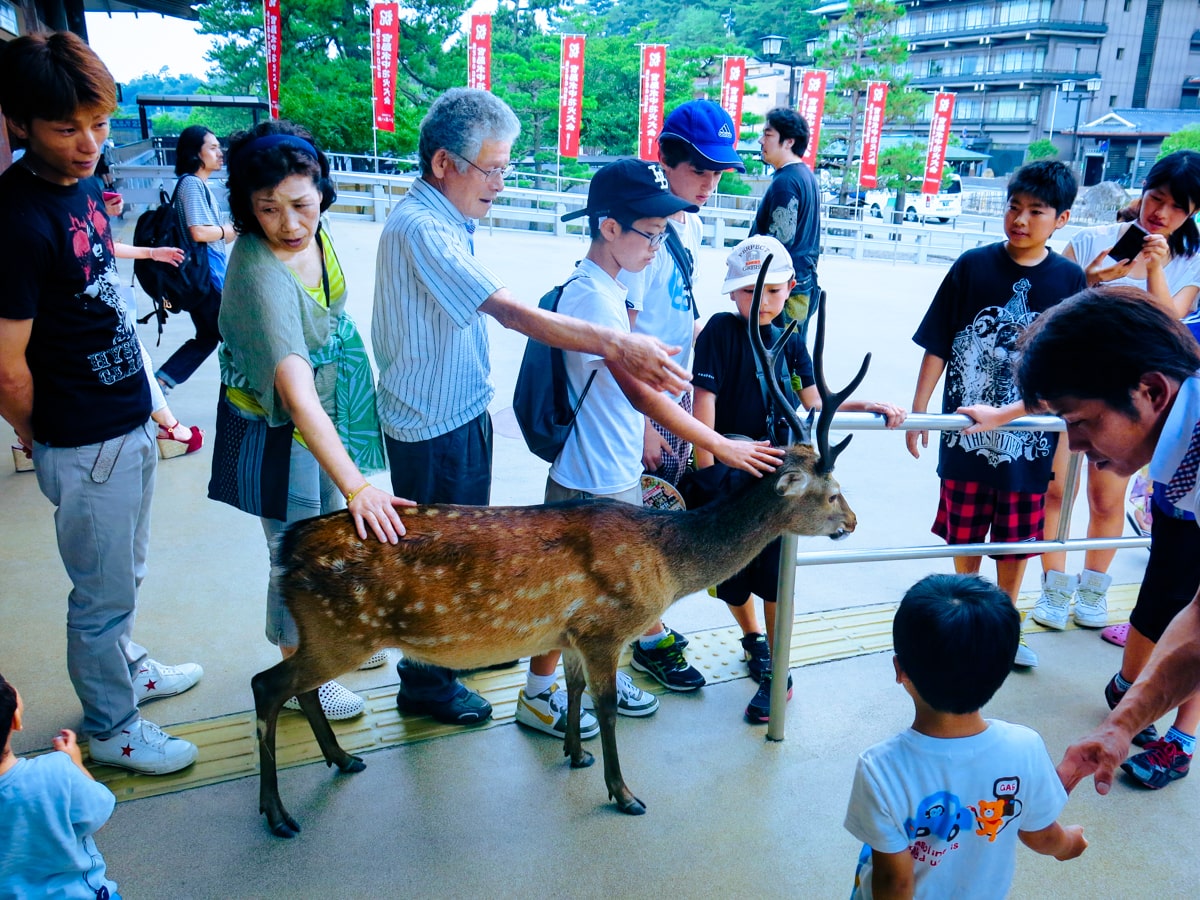
The deer of Nara have long been protected under both religious and civil laws. Throughout antiquity, the deer had a divine and sacred status. This meant, that if you brought any harm to the deer in Japan, you would be eligible for capital punishment.
The last person to be executed for harming a Nara deer was recorded in the mid-17th century.
Though capital punishment for bringing harm to the deer was revoked a few hundred years ago, the deer of Nara were then put under ‘national treasure’ status in a bid to keep them safe.
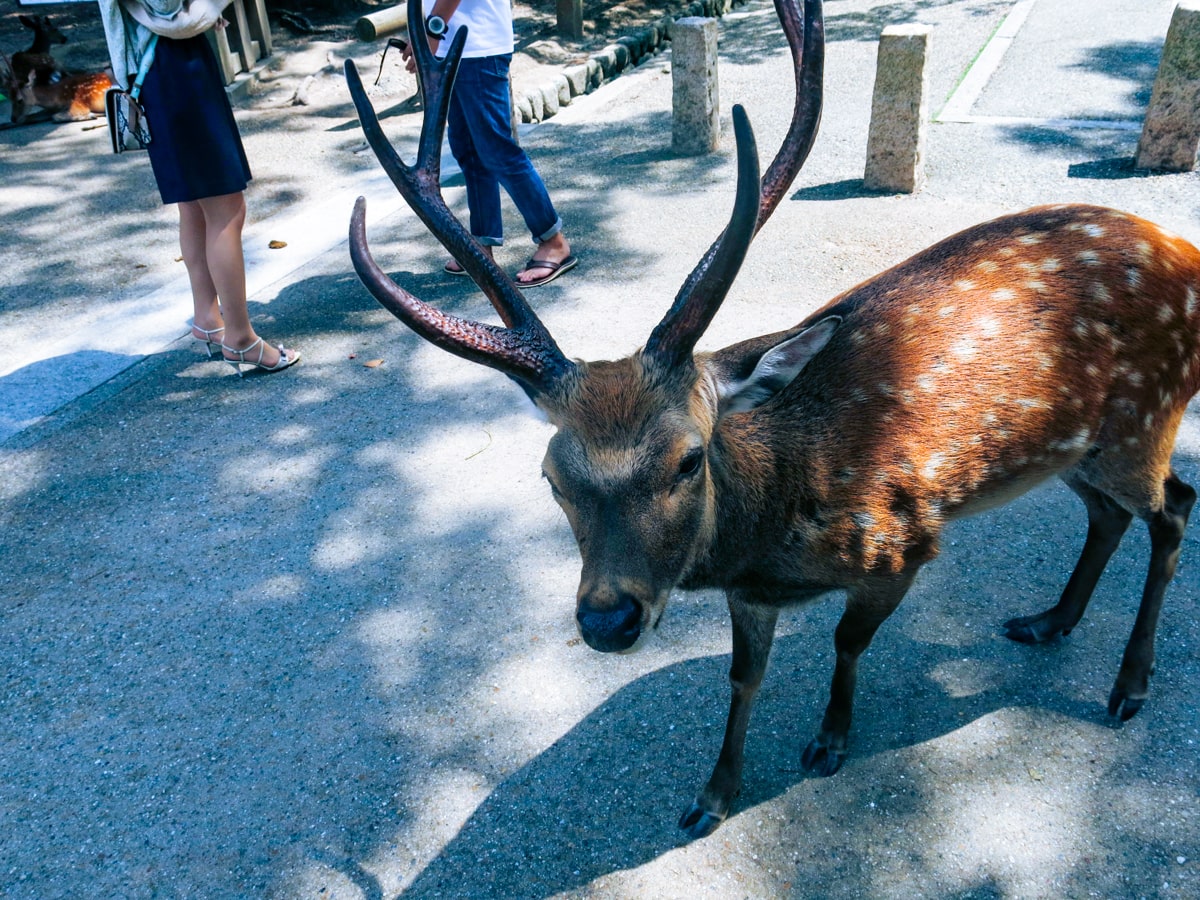
There have been many modern examples of people being punished for harming the deer; in 2010 a man was sentenced to six months in prison for killing a Nara deer with a crossbow. The most recent example actually took place in 2021, when a man was arrested for butchering a deer after it rammed into his car.
The special status of the Nara deer is expected to be in place for generations to come.
Not only are their presence a decent source of income for the Japanese tourism industry, but their long history as divine and sacred animals has endured – something that is common in many traditions throughout Japan.
All this being said, there have been undeniable problems with letting thousands of Nara deer roam untouched for centuries. At numerous periods in history, their high population number has created worry amongst farmers as they are known to cause environmental problems and crop damage.
To prevent overpopulation, the region was divided into several zones in 2017, and authorities allowed the culling of 120 deer to take place.
Nara’s Bowing Deer: How & Why Are They So Polite?
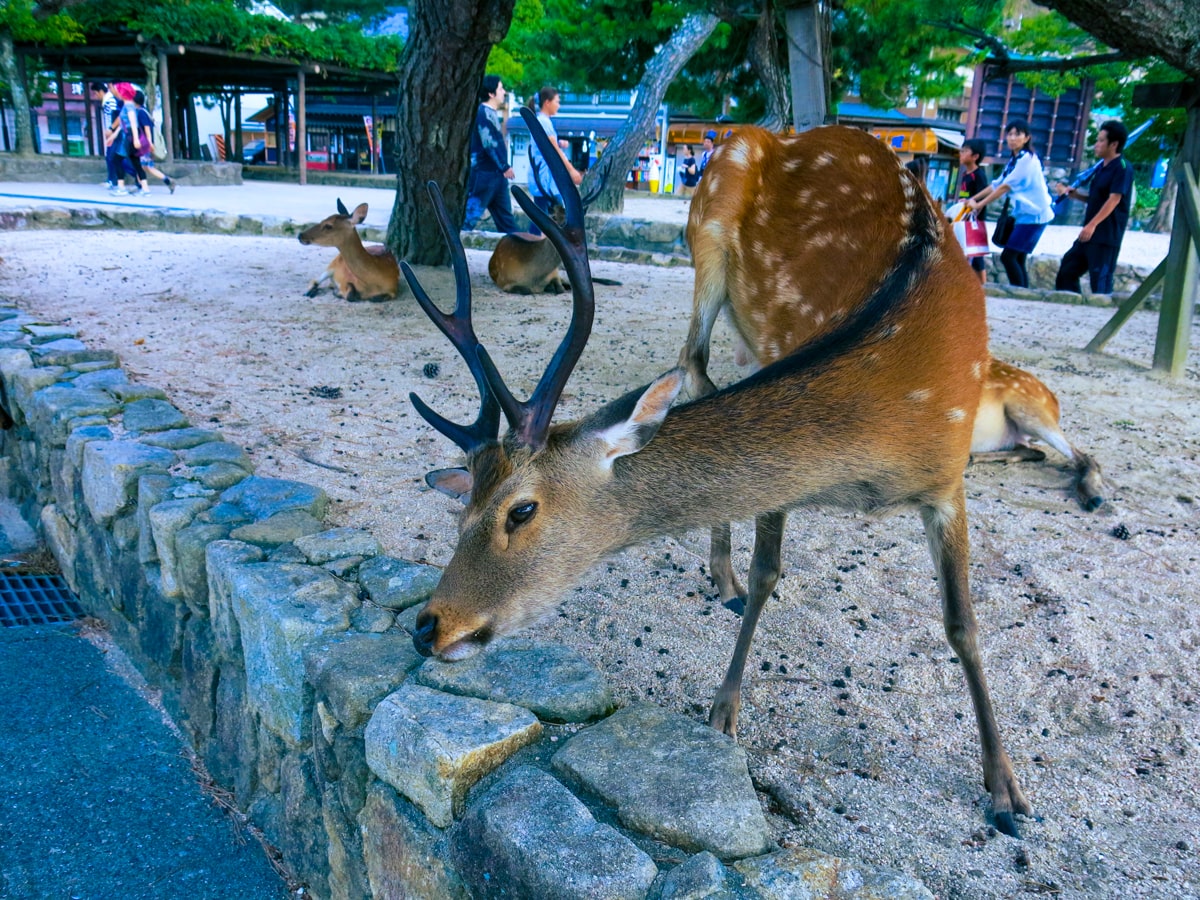
Plenty of tourist attractions around the world are guilty of exaggerating the truth to lure in unsuspecting travellers searching for that unique Insta-snap. But, when it comes to the Nara deer, the title really does fit its weird reality!
Bowing in Japanese culture has a long and interwoven history in society. Known as Ojigi, the lowering of one’s head or upper torso is a sign of greeting, apology, gratitude and general respect. How, and when, the deer of Nara learnt this traditional Japanese greeting is unknown, but like many animals, it’s more than likely to be a learned behaviour encouraged by a reward of food.
With people greeting the deers in Japan with a bow and then feeding them, the Nara deer have learnt over time that if they repeat this action they will likely get food in return. Local vendors sell specialist-made deer food to give to the deer, and tourists flock to bow and feed the deer.
Can Nara Deer Get Aggressive?
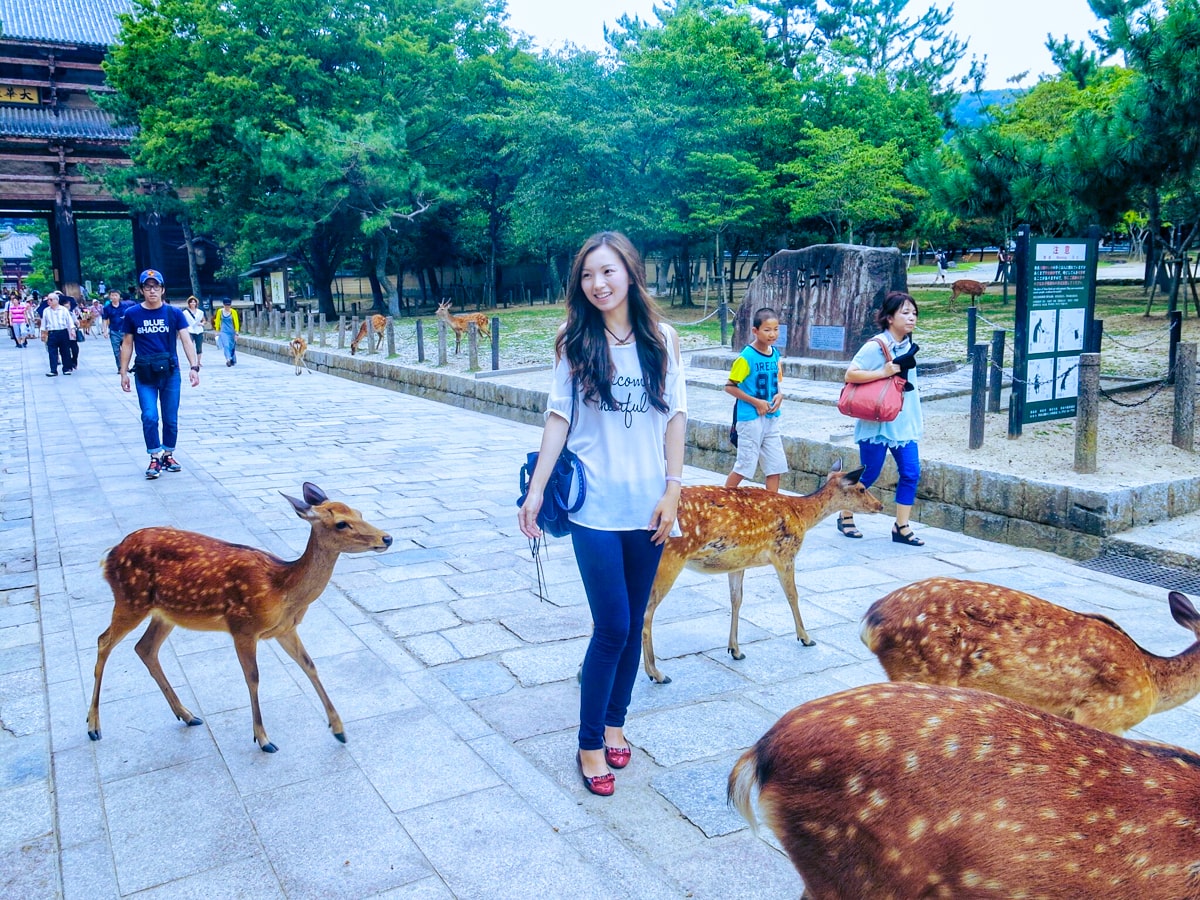
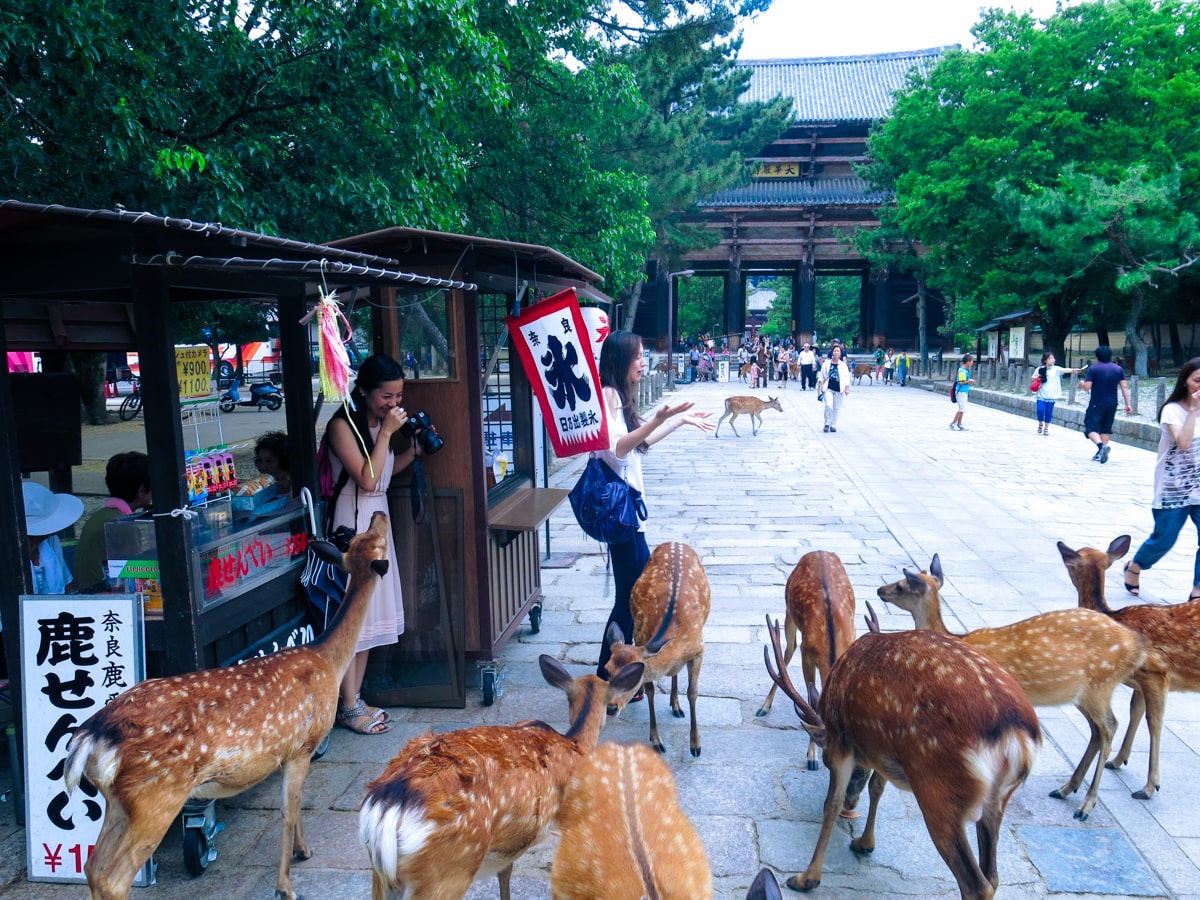
The image of deers in Japan, and perhaps deers in general, is one of placid serenity. Unfortunately, they’re not all sparkly-eyed Bambis as Disney would like us to think. Gorgeous and graceful they may be, but they are wild animals at the end of the day, not your doting house pooch.
While the interactions between people and deer have become a daily occurrence in Nara Park, it’s always worth keeping in mind that there have been times when the deer have become over-enthusiastic, aggravated and bitten or even headbutted a visitor or two.
Sometimes it’s the case of the individual deer having a bad day, or being hangry and often it’s the tourists’ fault; I’ll keep you safe from a Bambi bite (or head-butt) later on in this guide with a couple of nifty Nara deer tricks and tips.
More often than not, the deers will only react when provoked. You’ll see signs around the park in Japanese, English and Chinese, reminding visitors not to tease the deer and to treat them with the same caution you would any other wild animal.
Is Feeding The Deer in Nara Park Causing Harm To The Animals?
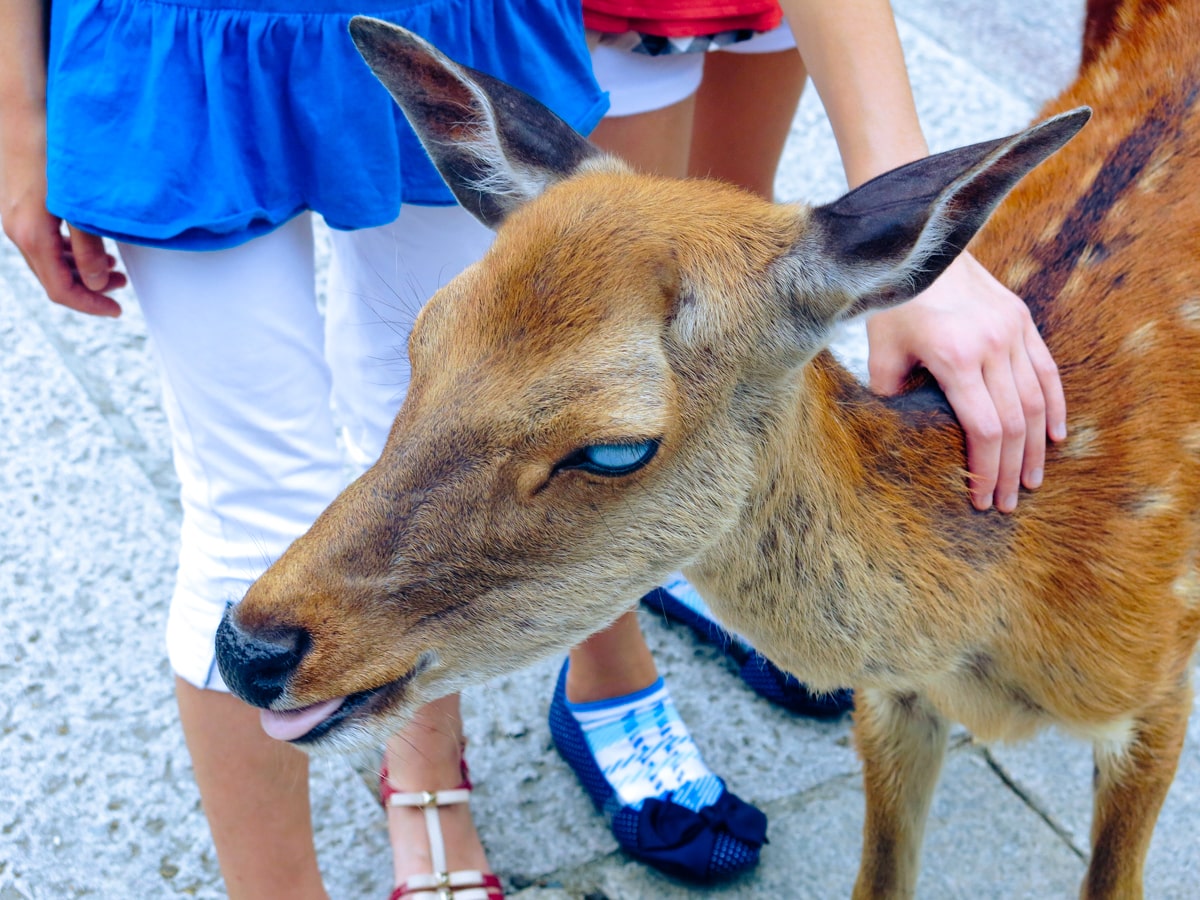
As with many of the wild sika deer in Japan, the Nara deer are more than capable of finding their own food. Throughout the year, the Nara deer will forage for food, eating a variety of different plants, including grass, silver pampas, and other varieties of land grasses found across the Nara area.
The deer of Nara can be divided into two separate groups based on their diets. The first group are the Park Deer, who live on the flatlands of Nara Park and the second are the Mount Wakakusa deer, who call the uplands of Mount Wakakusa their home.
Both sets of deer rely on a diet of grass, feeding on different types on the parklands and the uplands. This great dependence on grass makes the Nara deer very different from other species that live around Japan.
Though the different types of grass are the main source of food for the deer of Nara, they also enjoy huge amounts of food that is hand-fed to them by the thousands of tourists that visit the park each year.
This takes the form of Shika Senbei or deer crackers in English.
Made from wheat flour and rice bran, the crackers include no sugar to ensure the deer aren’t consuming anything they’d find difficult to digest naturally.
The Nara deer crackers are sold by nearby vendors and are trademarked by the Foundation for the Protection of Deer in Nara. This means that a portion of the profit made by the deer cracker vendors goes towards the protection of the deer in Nara Park.
How Has The Pandemic Affected The Deer in Nara Park?
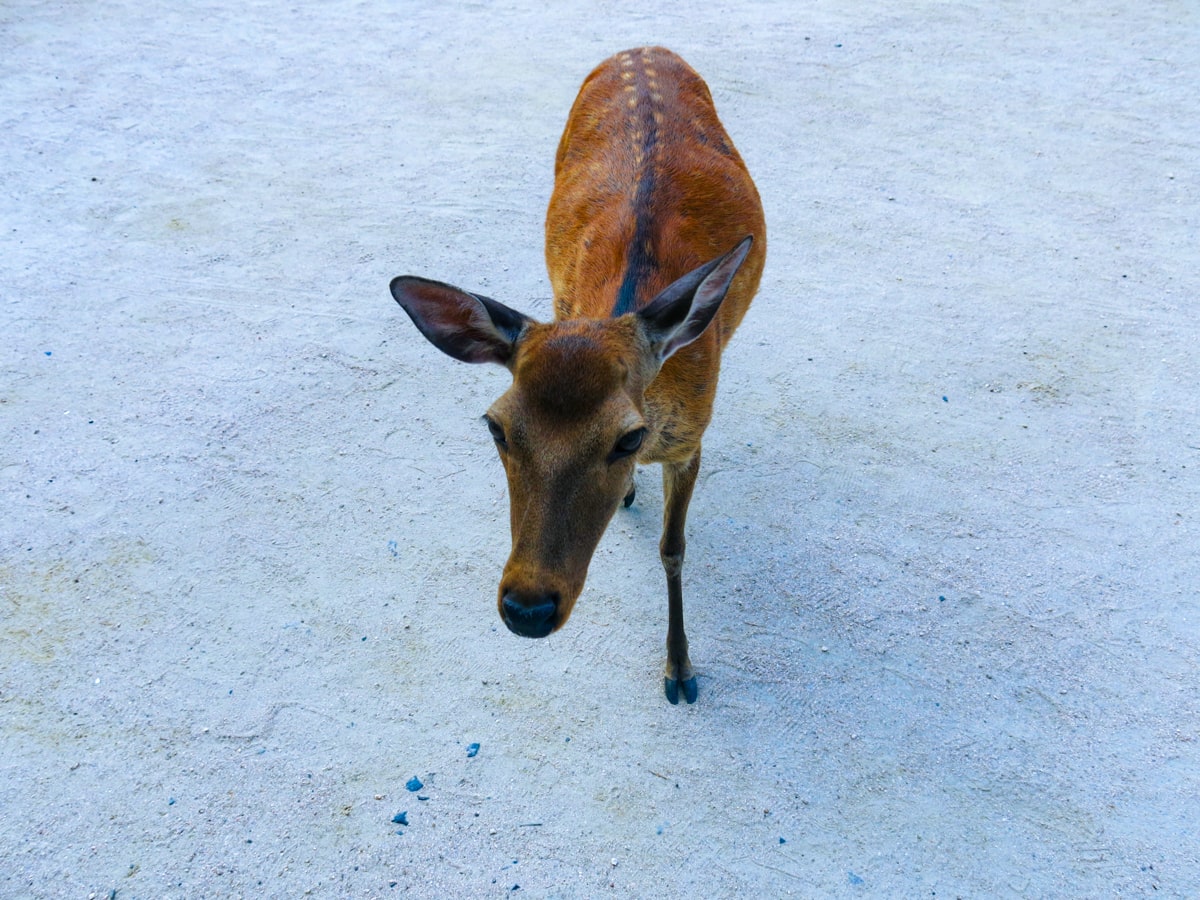
After decades of interactions with huge crowds of tourists, the behaviour and everyday life of the Nara deer became intertwined with that of the visitors. This included relying on the numerous handouts of deer crackers for their daily food intake.
Once the pandemic hit, Japan, alongside the rest of the globe, closed its borders and millions of tourists disappeared; all of a sudden, the everyday lives of the deers changed dramatically.
The deer’s large food source of deer crackers, usually fed to them in huge quantities, suddenly was no more.
To find food, the deer of Nara Park began to wander further outside of the park and into the built-up areas of the nearby city. Authorities worried that the population of deer would drop due to road accidents or aggressive human interaction. However, instead, they’ve noticed a notable improvement in the animals’ health.
The Nara deer’s favourite snack of deer crackers, fed to them in abundance by tourists, causes raging thirst in the animals, which meant they were drinking far more water than they would do naturally. This could cause quite an ethical conundrum for those responsible for the welfare of the bowing deers of Nara.
This combination of rice crackers and water has been known to cause gastrointestinal problems or diarrhoea, which was found in abundance in the park.
With the deer of Nara returning to their traditional diet of grasses, there has been a noticeable change in their droppings which have formed into healthier pellets, affectionately known as “black beans.”
Local Japanese residents also report that the smell from the deer has decreased, a direct result of their healthier grass-based diets.
But it’s likely that these health benefits are only temporary; I’m sure once the eager-to-feed tourists come back in their droves, the Nara deer will be all too happy to return to their favourite deer cracker snack and they won’t have forgotten those delightful manners.
Best Time For Feeding Deer in Japan
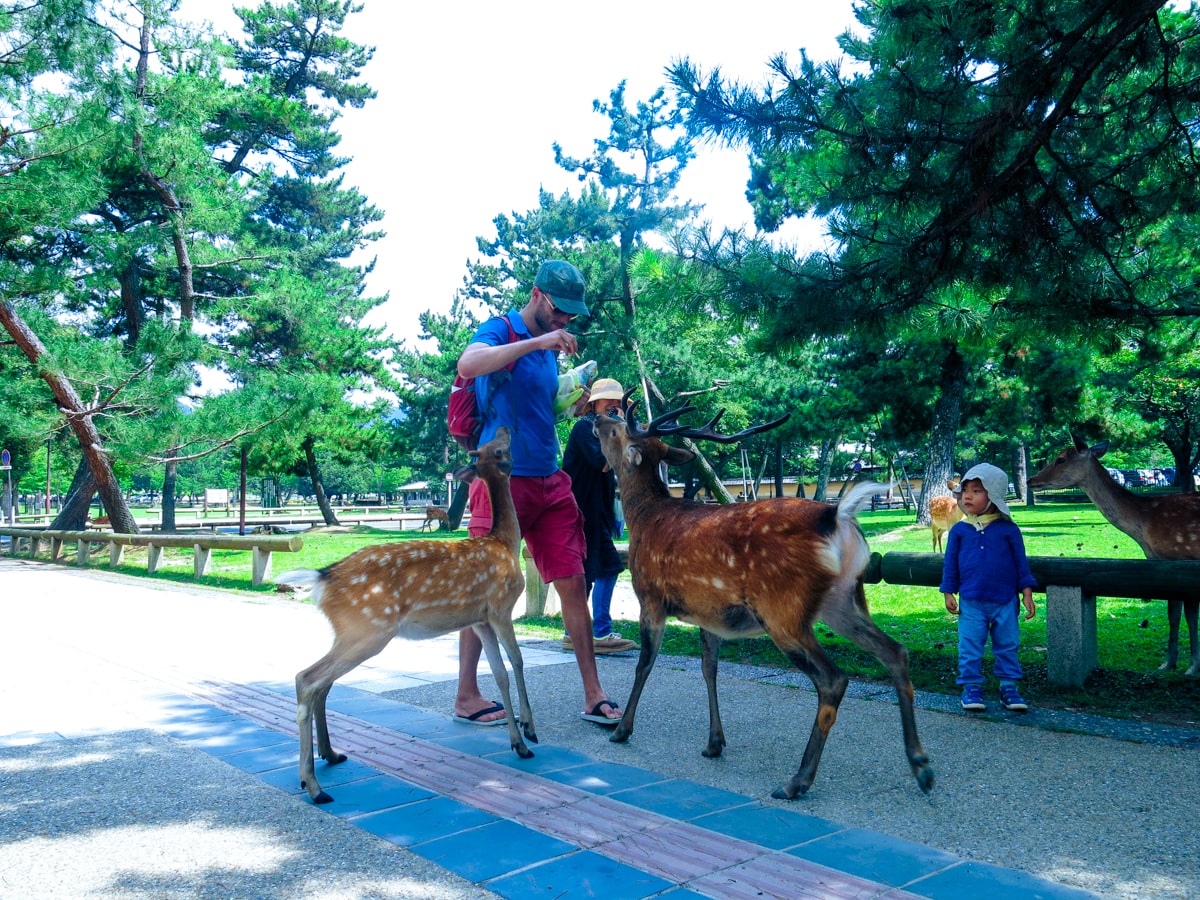
With a temperate climate throughout the year, you can visit the Nara deer at any time of the year. That being said, there are particular times of the year when the park and its surrounding city are looking and feeling their best.
During the months of October and November, Nara Park greets you with all of the Autumnal colours you’d come to expect from such a beautiful place. Watching and feeding the deer in Nara during the Autumn is a soothing activity, surrounded by the brown and rusty colours of the seasonal trees, the perfect backdrop for visiting Nara Park.
Winters in Japan (December/January/February) can be cold and you might be treated to some snow, it’ll be cold but bearable.
Arguably the best time to visit the deer of Nara is during March, April and May. At this time, the park and surrounding areas are awash with the famous, Somei Yoshino, or cherry blossoms of Japan.
Feeding Deer in Nara Park Japan: My Experience
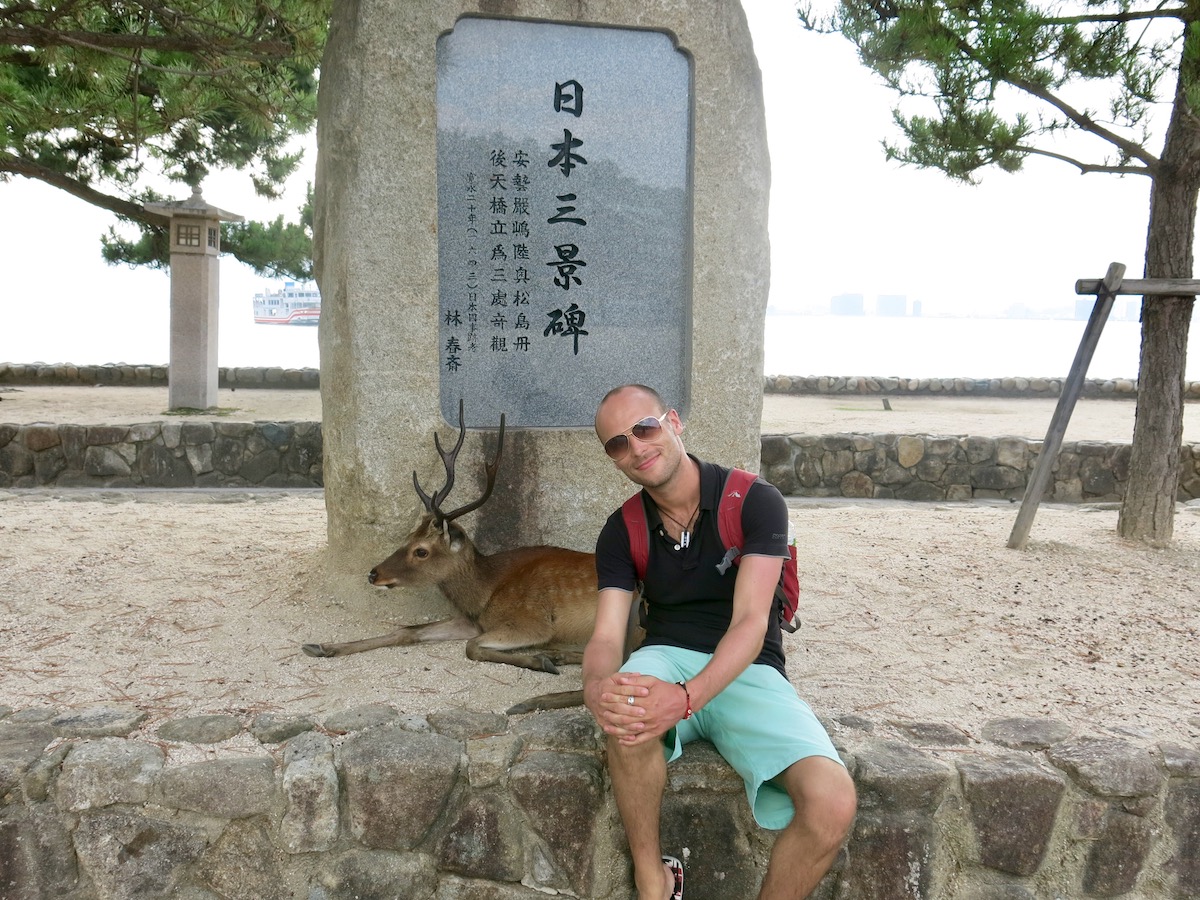
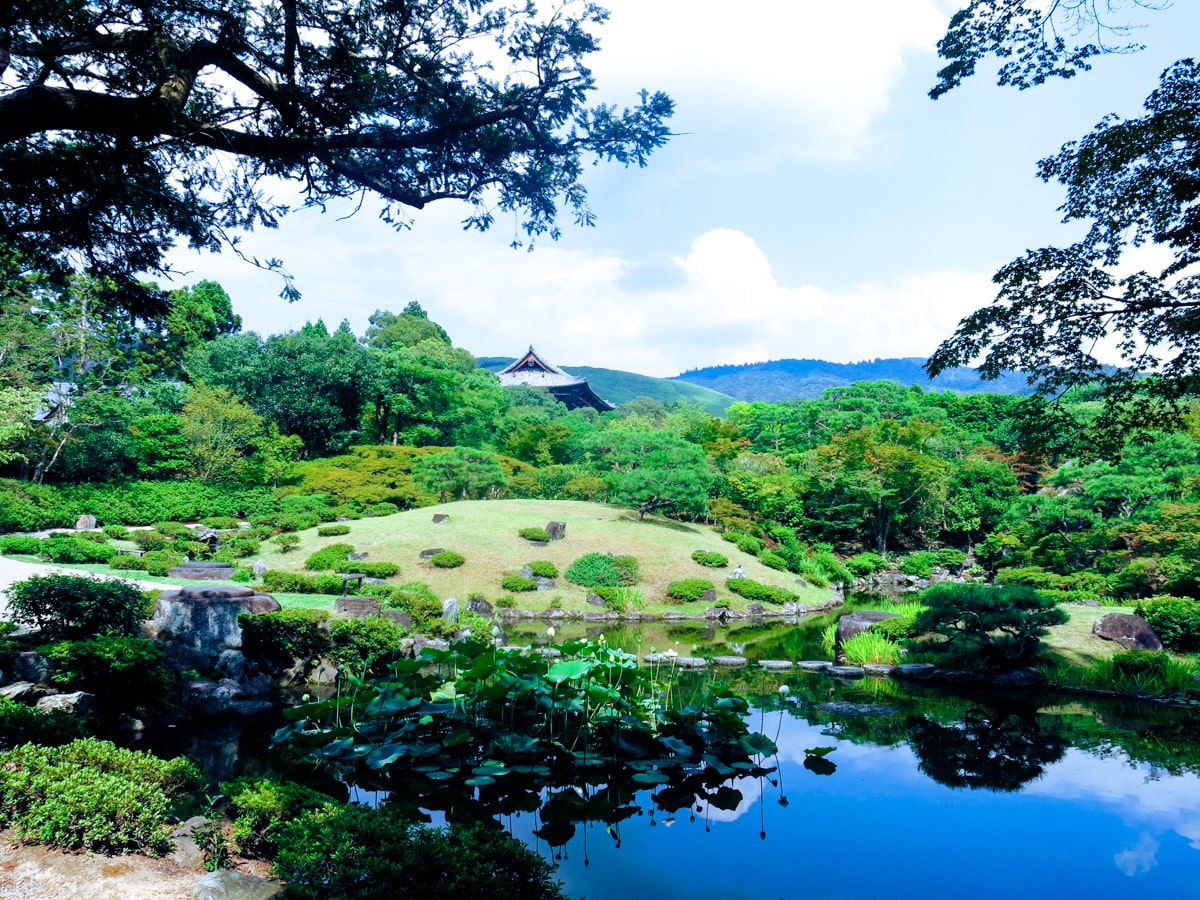
It didn’t take me too long when I started travelling the world to realise that people on the road really love to exaggerate.
Embellishments attract attention to chest-thumping men or eyelash-battering ladies in your nearby hostel/moving transport and arbitrary popularity points are given out for the coolest, or wildest of travel stories.
It’s often not their fault, the eyewitness account of the mind can romanticise, or cherry-pick to fit narratives and although I’m aware of this, I’m probably guilty of it myself when I’m not conscious of it.
The Nara deer of Japan, however, is not a distorted view of feeding the deer in Nara Park.
Immediately upon arrival, the cunning, cute and calculating Nara deer were stalking around people’s personal space – watching, waiting and observing to see whether they had any of those addictive deer crackers for them.
They never got too close without invitation (whether that be consciously or by accident, follow the tips below and you should be fine).
There were a few times when tourists squealed in fear as the deer grabbed (and ate) their maps, or chomped at dangling handbags, and even a few times when they teased the animals. Most of the time the deer were well-behaved and human error was mainly the issue whenever they were not, although if I went with children I am sure I would have been a lot more vigilant.
I had a bit of a close scare when I tried to feed a deer or two that were close to other deer, before I knew it they were all surrounding me – gnawing up at my bag of crackers. Again, human error (albeit by mistake).
If you go and want to feed them deer crackers, I suggest offering one or two to a deer that is sitting or wandering alone. They tend to be more pleasant and it’s much easier to handle one hangry deer that’s gotten a little too enthusiastic than it is to pacify a gang of them.
I did pet a few while I was there and I used my intuition to help me survive without any pissed-off deer scars. If a deer seemed dosey, or gentle I put my arm out towards its body in the same way you would to a dog.
Weird analogy maybe, considering I have hammered home in this post that the deer of Nara are indeed not domesticated animals, I guess I just got carried away and wanted some sort of affection/connection with them on a physical level.
Walking around a town of roaming wild deer, who bowed for food never got boring to see and I thoroughly enjoyed the cheeky, hooved residents strutting alongside me as I checked out the temples and the rest of the area.
It’s maybe uncertain times for the animals at the moment, but when you get the chance to see the Nara deer of Japan; remember to treat them with respect, a pragmatic level of fear and of course… with a courteous bow of the head.
6 Tips For Feeding Deer in Nara Park
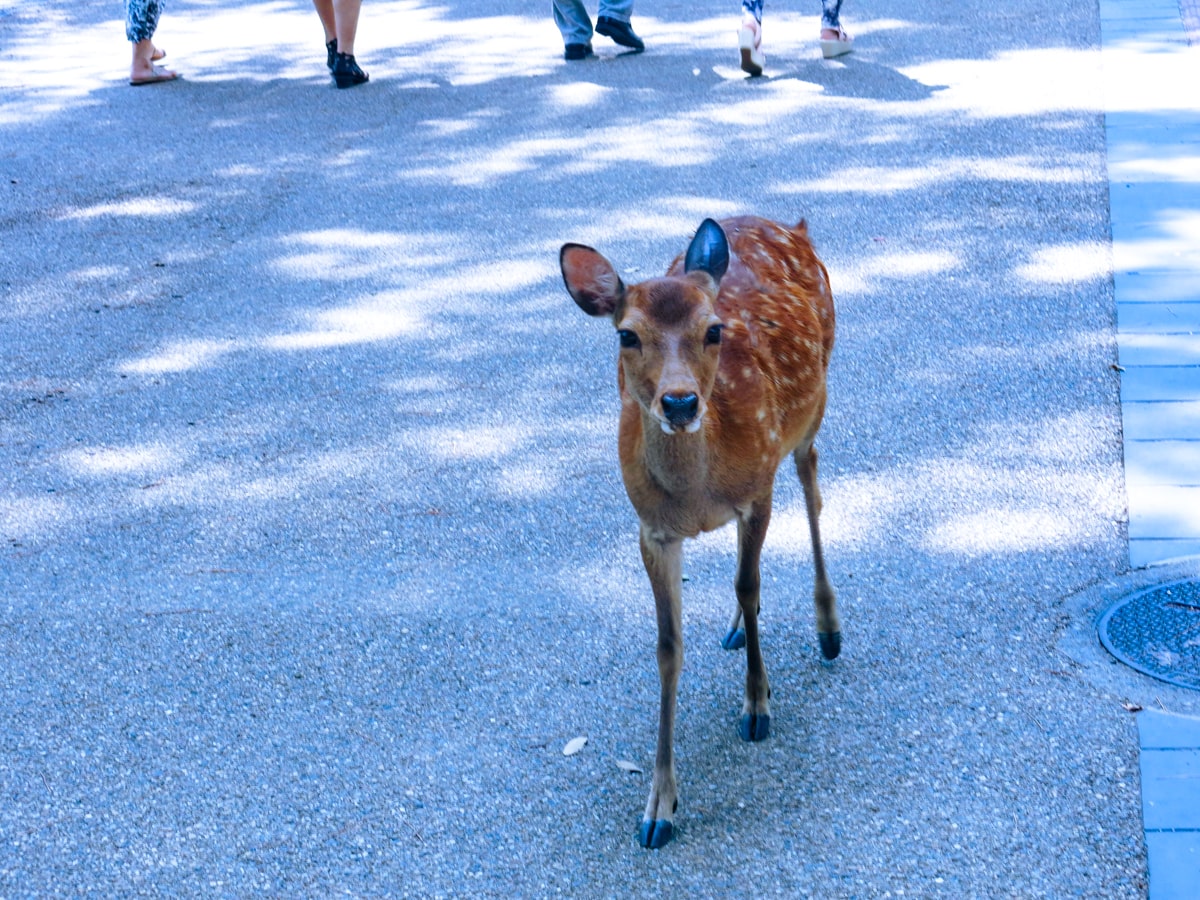
On the surface, visiting the bowing deers of Nara Park should be a straightforward and enjoyable experience. Yet, like so many great things that become tourist attractions, a few bad eggs tend to go in all guns blazing and turn what once was a unique and innocent experience into a bit of an uncultured mess.
With a few handy tips, you can ensure you have a great experience with the Nara deer without upsetting yourself and the local people of Japan.
- Remember; the Nara deer are wild animals. The deer of Nara may seem friendly and even pet-like; they aren’t, the deers are wild animals and much more aggressive than their shyer cousins, the barking deer of Hong Kong, or the Kerama deer that you will see on some parts of your Okinawa itinerary. The familiarity with humans comes from decades of human interaction, not domestication. This means that if you do something that they don’t like, they may be inclined to bite or kick you. Move with slow movements and be aware of how the Nara deer react; if they turn away, you should respect that.
- Only feed them official deer crackers. It may be tempting to feed the deer your leftover lunch, yet these deer are very sensitive to what they eat. Feeding them the wrong thing can make them seriously ill, or even kill them, and as there is no vet or carer who checks on them like domestic animals, you will only leave the sacred deers of Japan to suffer. The deer crackers have been specially made to be eaten by the Nara deer, so take advantage of having something custom-made for them to eat nearby. Plus, when you buy from official vendors, part of the money goes towards their conservation.
- Always keep in mind that the Nara deer are considered sacred. With the deer of Nara considered sacred animals, it’s important to treat them with the same respect and cultural awareness that you would like any religious site. Any attempt to agitate or even mock the deer will be taken with the deepest disrespect by the people of Japan. And after all, if you have taken the time to travel to see the Nara deer, it’s easy to assume you are an animal and nature lover, so any respect and kindness should be given when encountering any of the natural worlds.
- Keep your bags close to your side. A little like the monkeys at the Lopburi food festival in Thailand, these Nara deer can’t always distinguish between what’s edible and what isn’t. And, if they’re feeling particularly hungry they might just nibble at your bag, your hair or even try and nab your phone from your hands. Keep your bags close and out of reach from the deer if you want to bring all your belongings back undamaged.
- Don’t forget to bow to the deer. A little like the traditional Japanese greeting, the Nara deer are wired to bow to you when you bow to them; this is no one-way street, you’ll need to earn your majestic bow. If you’re not sure what to do, take a look around you at the hundreds of other visitors and you’ll soon catch on.
- Try not to walk around with food. It’s best to keep your own picnic lunch for when you’re out of the park, as the Nara deers will pretty much think anything is for them. I’d also recommend avoiding walking around with any crackers in your hand unless you want to find yourself up against a few deer – put them away in your pocket or, even better, locked away in your bag.
This day trip from Kyoto did not disappoint and it’s exactly what it claims to be at face value – thousands of bowing sacred deer everywhere you turn. With the new information collected since the pandemic, you can wrestle with whether or not feeding deer in Nara Park in Japan is for you.
Even if you do opt to not feed them, you can still take in the beauty of the local surroundings and also tip your hat to the grace of these gorgeous (and often naughty) animals.


